The Trump administration made many COVID promises for fall. Here's where they stand.
The president has repeatedly made predictions -- many that didn't come true.
Widespread rapid testing. Football stadiums filled with fans. A rebounding jobs market.
Those are just some of the promises and predictions President Donald Trump and his administration have made since the early days of the novel coronavirus pandemic about what the federal government would deliver by September and before -- a month that at one point seemed distant enough that it would leave ample time to develop plans to combat the virus.
Plagued by what critics call a slow response to the virus out of the gate, the self-imposed deadline has been used time and again by senior administration officials, health experts on the White House coronavirus task force and the president himself as part of an effort to prophesize progress in the ongoing response to the coronavirus and the elusive return to normalcy.
Now September is here, and an ABC News review found that nearly all of those promises and predictions -- on testing, nursing homes, and death rates, among others -- have either fallen short or are drastically behind.
Warm summer weather did not cause the virus to vanish. Testing still lags in nearly every metric. And with federal support funds depleted, the nation's employers are emerging from the summer without any sense of an imminent resurgence.
Statement: Virus gone by end of summer
In the earliest days of the pandemic, Trump said that the county may overcome the pandemic by the late summer months as it "washes through."
"People are talking about July, August -- something like that," the president said at the March 16 press briefing. "So it could be right in that period of time where I say it washes -- it washes through, other people don't like that term but where it washes through."
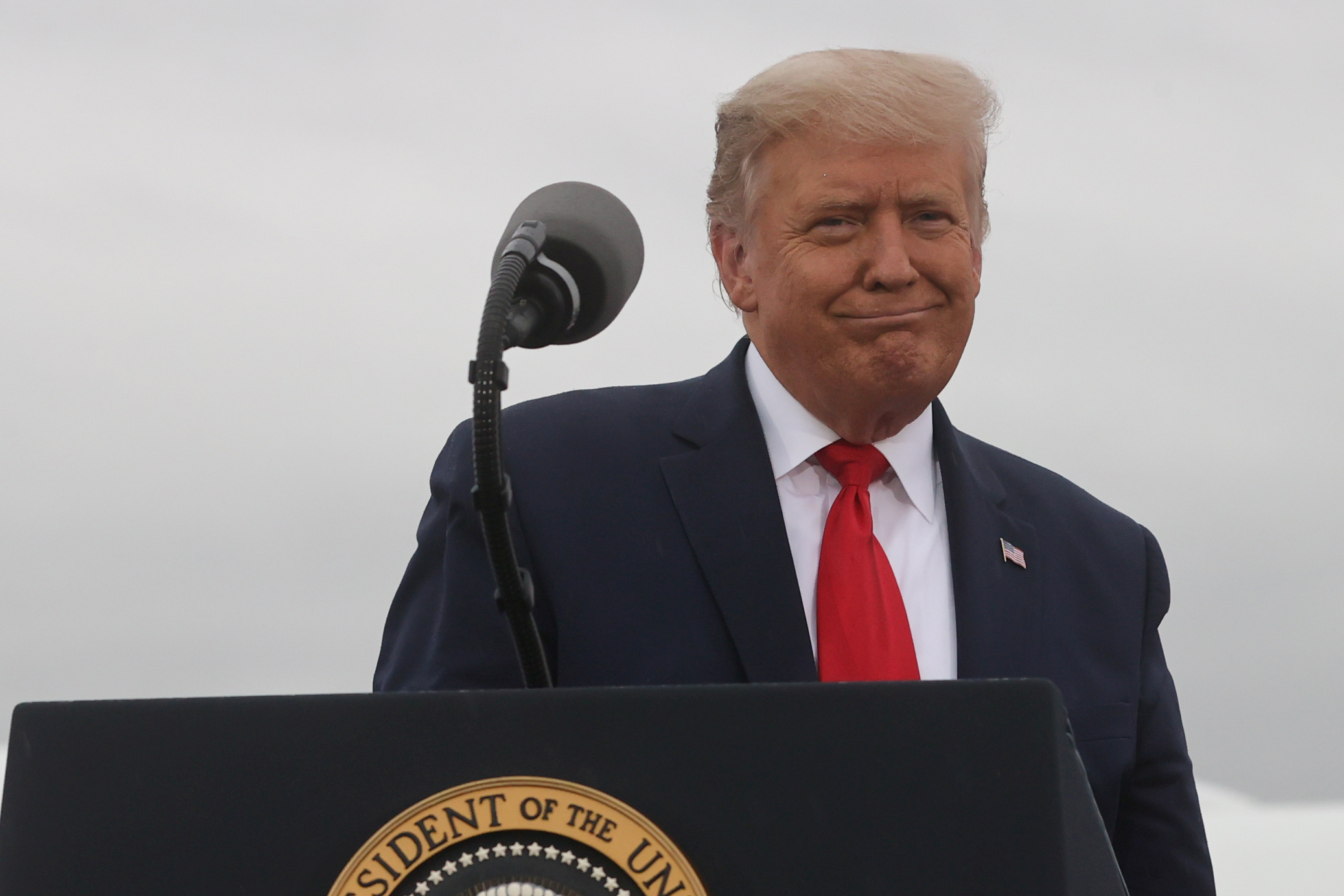
Toward the beginning of the pandemic, Trump posited that the disease would dissipate once warmer weather arrived.
"There's a theory that, in April, when it gets warm -- historically, that has been able to kill the virus," Trump said on Feb. 14. "So we don't know yet; we're not sure yet. But that's around the corner."
Reality: Pandemic rages into fall
While cases peaked in the summer, the virus has hardly dissipated across the country in September -- according to a recent ABC News analysis, cases are still increasing in 25 states across the country.
In early August, Dr. Anthony Fauci, a member of the coronavirus task force and the nation's leading infectious disease expert, warned that if the United States failed to slow the spread of the disease to just 10,000 new cases per day by September, "we're going to have a really bad situation in the fall," Fauci said.
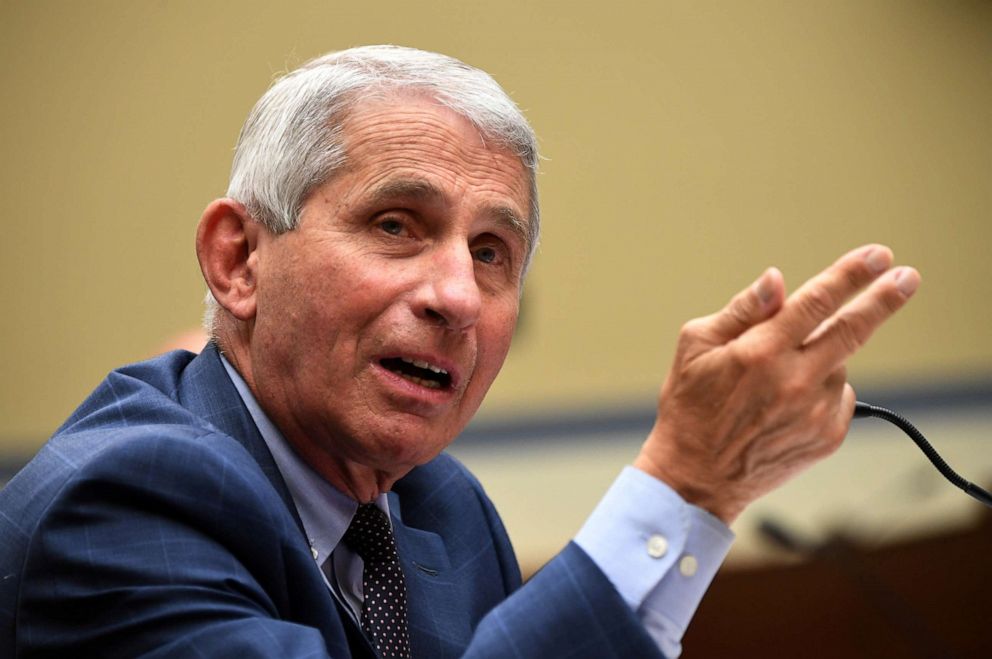
The country is nowhere near that level as it heads into flu season, which will only exasperate the challenges of combating the virus. A recent five-day average of new cases show nearly 40,000 new cases per day nationwide, according to Johns Hopkins University -- quadruple what Fauci said would be manageable.
Statement: Trump said death toll prediction overblown
During a gaggle with reporters on May 5, Trump brushed off a model that predicted the United States would see 134,000 deaths from the virus by August.
"That's with no mitigation," Trump offered as a reason the real toll would be far less. "We're doing mitigation."
He argued that social distancing would keep the fatalities lower, and claimed models have been "very inaccurate." Several models have been incorrect, but the president has regularly sought to downplay the virus' death toll.
Reality: Death toll higher by summer
By Aug. 1, the U.S. had seen 146,543 coronavirus deaths, according to The COVID Tracking Project -- higher than what the model had predicted.
When asked about the comment, a White House spokesperson defended the position.
"Models can be widely inaccurate," the spokesperson said. "The president has always put the health of the American people first as evidenced by his early response in January when he issued a travel ban on China, declared a public health emergency, and created the coronavirus task force -- it's clear his actions saved lives."
Statement: Course correction for the job market
After an April in which more than 20 million jobs were lost, Treasury Secretary Steven Mnuchin offered a glimmer of hope for the fall. After conceding that the jobs numbers would "get worse before they get better," Mnuchin predicted that, come September, the job market would begin to correct course.
"We'll have a better third quarter, we'll have a better fourth quarter," Mnuchin said on Fox News Sunday on May 10. (September marks the end of the third fiscal quarter and the beginning of the fourth.) "And next year is going to be a great year."
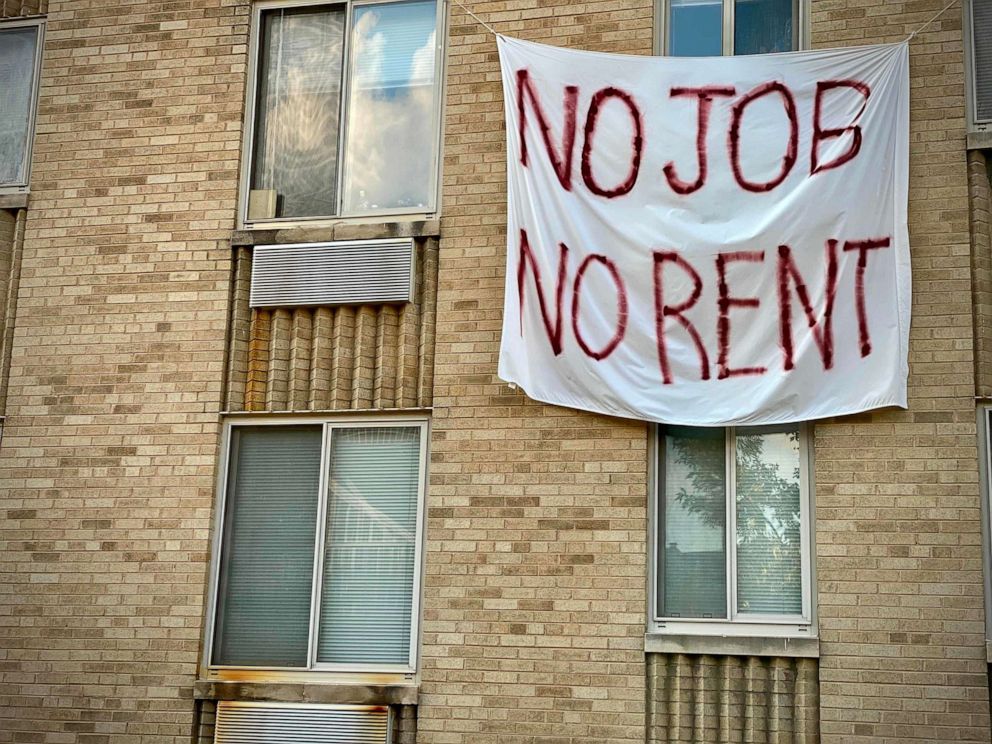
Reality: An improvement, but joblessness still higher than pre-pandemic
Mnuchin's broad prophecy that the economy would begin to turn around by September largely holds up. While there is still a long way to go, the stock market has rebounded and employers are chipping away at the jobless rate.
Even so, in August, U.S. employers added 1.4 million jobs and the unemployment rate fell to 8.4%, according to the Bureau of Labor Statistics, an improvement from prior months but still a marked uptick from the 3.5% unemployment rate in February, before the pandemic took hold.
On Thursday it was announced 884,000 people applied for unemployment in one week -- marking the 25th straight week of historically high unemployment claims.
Statement: White House says country on track to 'do' 100 million tests by September
Asked by ABC News about Trump's repeated comments disparaging the level of coronavirus testing, White House press secretary Kayleigh McEnany in August touted the "impressive" number of tests being conducted in the United States, and claimed the country was "on track according to HHS, to do 100 million by September."
"That is extraordinary," she said.
Reality: Just over 85 million administered as of Sept. 1
Nearly mid-way through September, and the projection of 100 million tests has almost been eclipsed.
In a briefing on Sept. 1, Adm. Brett Giroir, the Health and Human Services testing czar, said the United States had conducted more than 85 million COVID-19 tests. A Federal Emergency Management Agency memo from Sept. 1 highlighted the same figure: 85,070,581 have been conducted, it said.
In August, Giroir also said the U.S. would have conducted 85 million tests by September -- a projection that was precisely on the mark.
Asked about the inaccurate number McEnany reported, a White House spokesperson pointed to newer testing figures from Sept. 7 that are closer to the total she offered. "As of Sept. 7, we have conducted approximately 93.4 million tests nationwide," the spokesperson said.
HHS did not immediately respond to ABC News inquiries about the testing. After this report was published, a spokesperson for HHS said the government met its projection.
"We have not missed the mark," the spokesperson said. "In fact, we are on track to have completed 100 million COVID-19 tests in September. As of September 11 we are at 94 million tests have been completed."
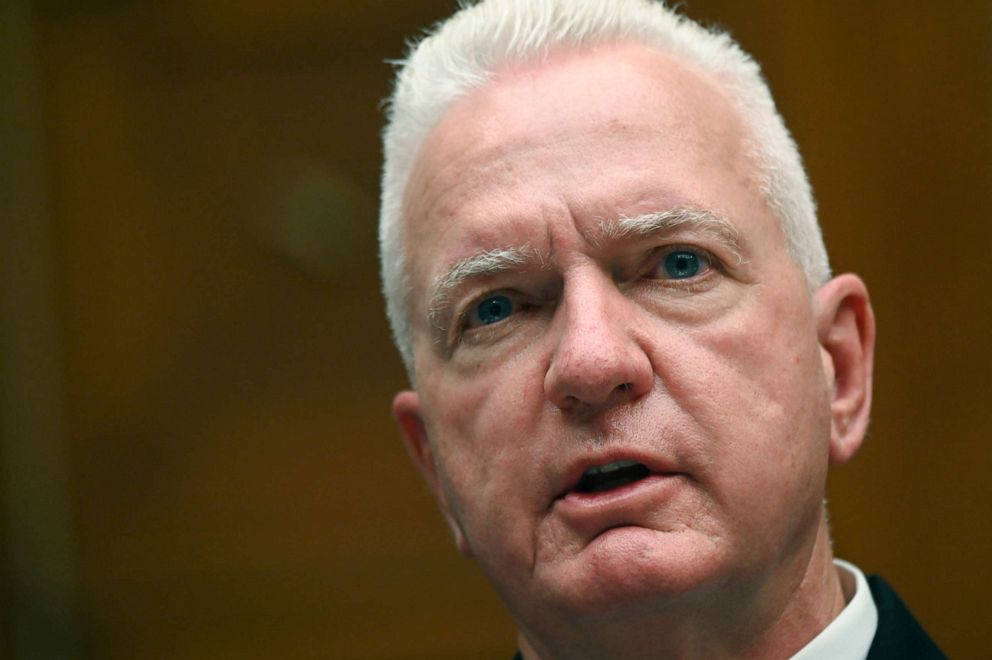
Statement: Capability to test 50 million people a month
After a critically slow testing rollout that led to shortages across the county, Giroir, the assistant secretary for health, promised in May that by September, the U.S. would have drastically ramped up its capabilities to be able to test up to 50 million people a month -- a major expansion from the early days of the pandemic.
Reality: Less than half executed, but HHS says it has 'excess'
The United States reported just over 24 million test results the month of August, according to an internal FEMA memo obtained by ABC News -- just below half of Giroir's prediction.
Again, significant demand for COVID tests suggest the numbers would have been higher if the capabilities were there.
An HHS spokesperson maintained that the government has the capacity to execute vastly more tests than the current demand calls for.
"The reality is the U.S. has excess and unused capacity for testing," an HHS spokesperson said. "We have the capacity to test approximately 90 million in September."
Statement: 50% of tests conducted would yield results in 15 minutes
In July, Giroir again made another projection about testing: by September, half of the tests conducted would have results back in just 15 minutes.
At the time, the country was experiencing a significant increase in spread of the virus, leading to backlogs in testing turnaround and results, which could take longer than two weeks in some cases, a delay experts said rendered results almost useless.
Reality: Turnaround time has picked up, but no evidence of widespread deployment of rapid tests
Reports of weeks-long testing delays from the summer have since subsided, and testing turnaround time appears to have picked up significantly, according to an internal FEMA memo obtained by ABC News, though there is no evidence of widespread deployment of rapid tests.
As of Sept. 1, just over 90% of test results came back in under three days, the typical turnaround time for a test, according to an internal FEMA memo obtained by ABC News. Still, 3% of tests were taking longer than five days, according to the memo.
On Aug. 21, one of the largest COVID-19 testing labs, Quest, reported an average turnaround time of two days for tests it was processing.
An HHS spokesperson said rapid test capabilities are expected to increase as the fall goes on. In late August, the Food and Drug Administration granted an emergency use authorization for a $5 Abbott Labs rapid test.
"Abbott has projected production of these tests up to 48 million per month beginning in September," the spokesperson said.
The spokesperson also pointed to 5 million point of care tests that have been deployed to nursing homes in recent weeks.
Statement: Rapid tests delivered to every single nursing home in the country
This summer, HHS and the administration announced a plan that they said would deliver rapid testing machines to every nursing home in the country -- facilities that experienced a devastating spread of the virus and accounted for a disproportionate number of total fatalities in the country.
On a call with the nation's governors in mid-August, a copy of which was obtained by ABC News, Vice President Mike Pence said, "by early September, we would anticipate that every nursing home in your state will have a point of care test distributed from the federal government."
"By mid-September, every nursing home in America will have a 15-minute test," he said again on the Aug. 18 call.
HHS's initial announcement of the initiative in July was more reserved. The agency said the tests would be "distributed to nursing homes in COVID-19 hotspot geographic areas with the United States," and the Centers for Medicare and Medicaid Services planned to deliver the devices in two waves: Wave 1 would deliver machines to about 2,400 nursing homes between July 20 and Aug. 14; and wave 2 would deliver devices to the remaining 11,800 homes by Sept. 30.
Reality: Not quite there yet
According to health officials in five states, the government has begun to distribute the machines, though not nearly at the pace that Pence claimed.
New York, Oklahoma, Pennsylvania, Oregon and North Carolina all confirmed to ABC News that distribution had begun, though none were able to confirm that every facility had received a machine.
Nate Wardle, a Pennsylvania Health Department spokesperson, said he believes "only a limited number" of facilities in Pennsylvania had received them. Kelly Haight, a North Carolina spokesperson, said, "a little more" than half of nursing homes had received machines there. In Oregon, nearly a quarter eligible homes have received testing machines, a spokesperson there said, and the rest are expected to arrive in the coming days.
Wardle, the official in Pennsylvania, also pointed out what he said were two major shortfalls of the program: machines are being sent only to skilled nursing facilities and not assisted living residences, "which also have the potential to see outbreaks among vulnerable populations;" and machines are only to be shipped with a finite amount of supplies, and no clear plan to "assist facilities, or states, in ensuring that facilities have the continued supplies to use these machines."
CMS did not initially respond to ABC News' inquiries about the status of the distribution. After this report was published, a spokesperson for CMS said the government plans to complete delivery of both machines and tests kits to 13,850 eligible facilities by later this month.
Specifically, the spokesperson said just over 13,000 machines and nearly 5 million point of care tests have been shipped to 13,343 facilities so far.
"Nursing homes will be responsible for ordering resupplies of tests/kits with the $5 billion in aid CMS has provided to them," the spokesperson added.
A spokesperson for HHS, who also did not respond to inquiries until after this report was published, defended the "federal efforts to supply nursing homes with rapid point-of-care antigen instruments and tests" as the agency's "highest priority to save lives."
"Adm. Giroir has worked closely with [private sector companies] BD and Quidel to ensure HHS orders are fulfilled so that all [government]-certified nursing homes receive their device and associated tests," the HHS spokesperson said.
Statement: More than a million tests per day, access to 20 million rapid tests and 23 million point of care tests
In yet another testing prediction, Giroir said in June that the U.S. would "absolutely" have the capacity to conduct 1.3 million to 1.7 million tests per day by September if needed. He also predicted the country would have access to 5 million rapid tests in July and that the number would climb to 20 million by September. "This is going to grow. But there are some limitations," he said, referring to the tests being less sensitive than those that take two to four days to process.
Giroir also predicted the U.S. would have more than 23 million point of care tests by September -- tests that can be administered in doctor's offices and clinics as opposed to testing sites.
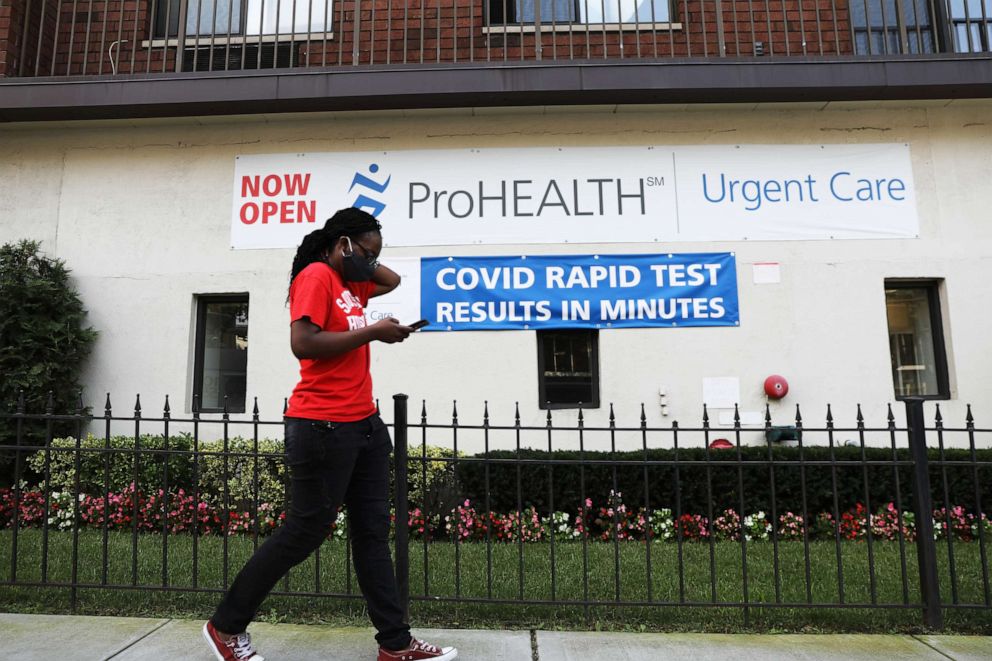
"We're completing over 80% of our tests within three days, almost 90% within five days. Of course, we're going to improve that. We're continuing to improve that. By September, we'll have over 23 million point of care tests. So we are improving that," he said on NBC's "Meet the Press'' on Aug. 2. He also repeated the claim Aug. 10 during a phone call with governors.
Reality: Testing level half of the promised capacity
In a briefing on Sept. 1, Giroir said the U.S. is collectively testing about 820,000 a day -- just over half of what he promised in early June.
Giroir's office has claimed that he was referring to capacity, not to the number of tests administered. But with nearly 40,000 new cases of the virus every day, it remains unclear why the U.S. would not be testing at its full capacity.
"The USG has provided the states with sufficient testing supplies to exceed their testing goals," A spokesperson for HHS, who did not respond to inquiries until after this report was published, said.
"The level of testing in each state is dependent on the level of transmission in the community, but it is important for state and local authorities to decide the level of testing for their communities."
Statement: Sports must go on
President Trump has long advocated for American professional sports leagues to march forth, often adding his desire for fans to return to stadiums. In early April, that was the message he sent to various league commissioners.
According to ESPN, Trump told the league executives that "he hopes to have fans back in stadiums and arenas by August and September," citing sources familiar with the call. The report also noted that Trump said "he believes the NFL season should start on time in September," according to sources.
The president expressed similar expectations publicly. Later the same day as the conference call with league executives, Trump said, "I want fans back in the arenas ... whenever we're ready. As soon as we can, obviously."
Reality: A number of different approaches
Various leagues have returned to action with varying degrees of normalcy and with varying degrees of success. As summer wore on, both the NBA and NHL began league playoffs in so-called "bubbles" intended to limit players' and staffs' interactions with possible spreaders.
Neither league has allowed fans into their bubbles, much less the arenas, and neither league has suffered significant transmissions.
On Thursday, the NFL returned to action. Teams have taken different approaches, with some banning fans for the whole season, some banning fans for the first few games and others allowing a limited number of fans for the first week.
This report was featured in the Friday, Sept. 11, 2020, episode of "Start Here," ABC News' daily news podcast.
"Start Here" offers a straightforward look at the day's top stories in 20 minutes. Listen for free every weekday on Apple Podcasts, Google Podcasts, Spotify, the ABC News app or wherever you get your podcasts.




